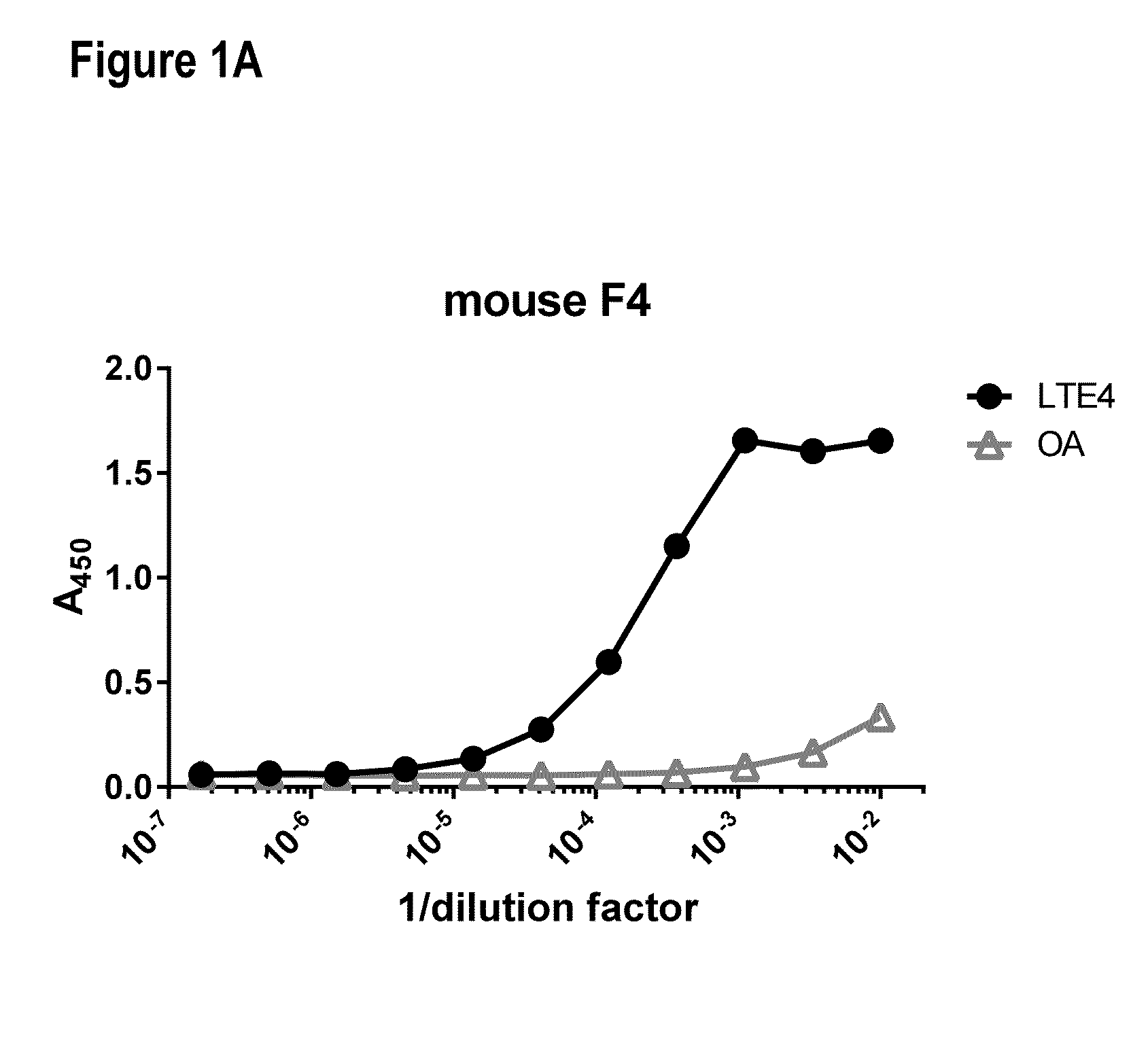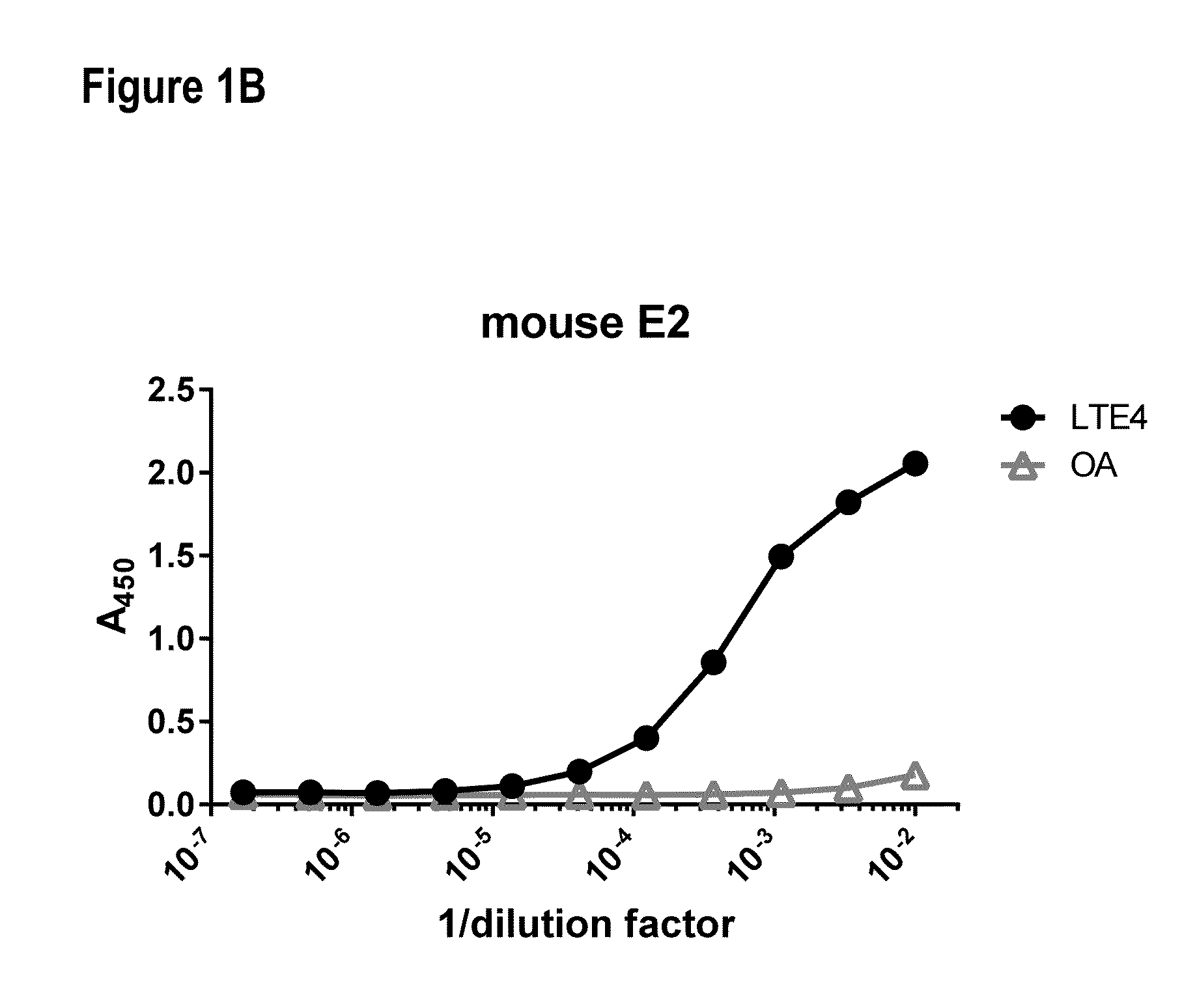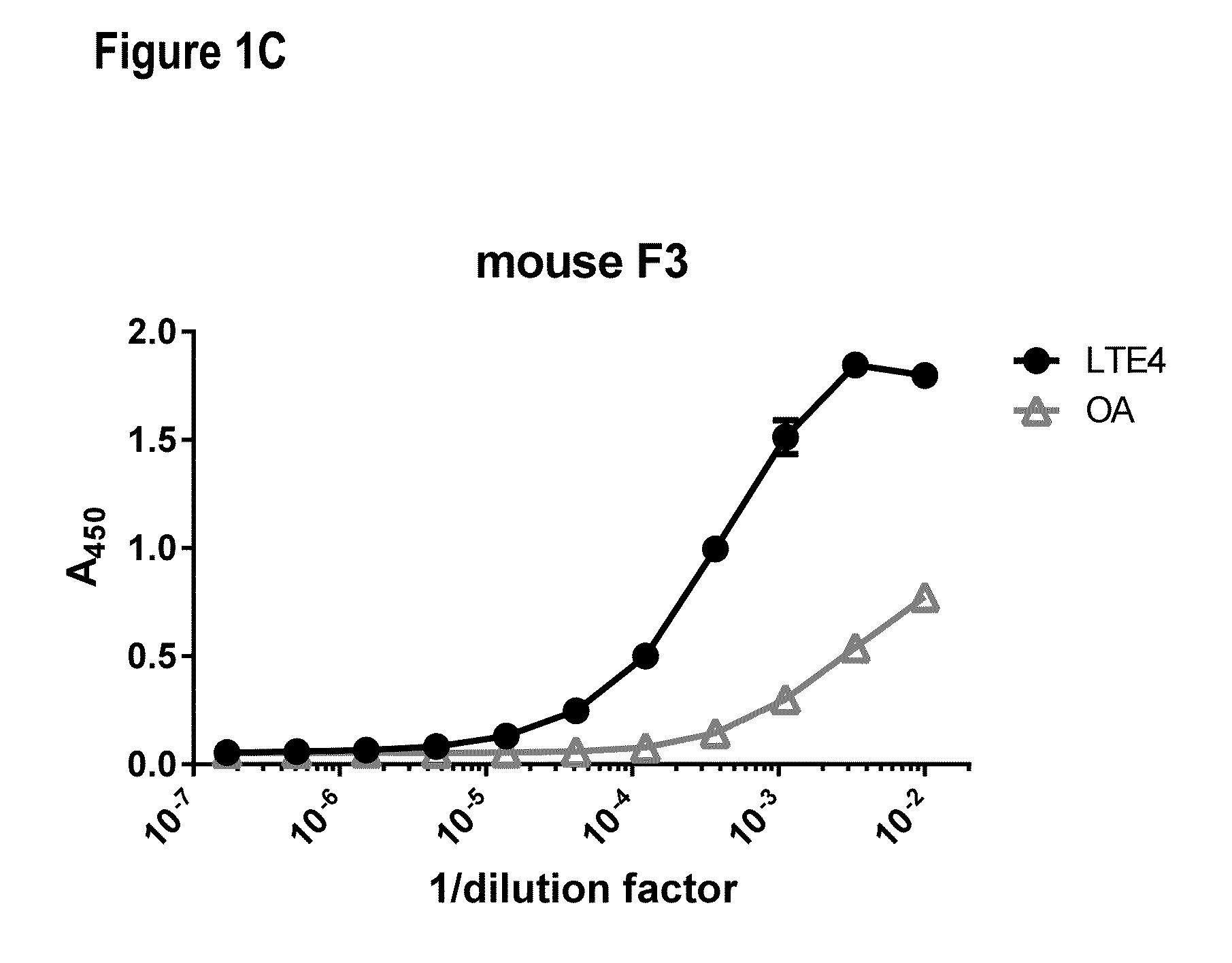Compositions and methods for binding cysteinyl leukotrienes (cyslts) for treatment of disease
- Summary
- Abstract
- Description
- Claims
- Application Information
AI Technical Summary
Benefits of technology
Problems solved by technology
Method used
Image
Examples
example 1
Synthesis of Immunogen (LTE4-Protein Complex)
[0244]An LTE4-protein complex for use as an immunogen was prepared by crosslinking LTE4 via the amine located in the head group of LTE4 to a protein carrier using bis(sulfosuccinimidyl)-suberate, a homobifunctional amine-to-amine crosslinker. 0.22 mg of cysteinyl leukotriene E4 (LTE4; Cayman Chemical Company, Cat #20410) was incubated with 2.5 mg of Imject Blue Carrier Protein (BCP; Thermo Scientific, Cat #77130) and 2.9 mg of bis(sulfosuccinimidyl)suberate (BS3; Thermo Scientific, Cat #21580) in 90% PBS / 10% DMSO for 2 hours at room temperature, followed by purification of the protein-lipid conjugate using a desalting column (Thermo Scientific, part #89882) equilibrated with Imject purification buffer (Thermo Scientific, part #77159).
example 2
Antibody Production
[0245]Nine 6-8-week old female Swiss Webster mice were immunized by two subcutaneous injections of 0.025 mg (0.05 mg total) of the immunogen (BS3 facilitated conjugate of LTE4 and BCP) emulsified in complete Freund's adjuvant. After 21 days, the mice were boosted with a single intraperitoneal (IP) injection of 0.05 mg of immunogen emulsified in incomplete Freund's adjuvant (IFA). Every week thereafter the mice received a single IP injection of 0.05 mg of immunogen emulsified in IFA for an additional 8 weeks. Serum samples were collected 3 days after the second, third, fifth, and ninth boosts and screened by direct ELISA as described below for the presence of anti-LTE4 antibodies (FIG. 1). Spleens from mice that displayed high antibody titers were subsequently used to generate hybridomas using the ClonaCell®-HY hybridoma cloning kit (Stemcell Technologies, Cat #03800). Once the hybridomas were grown to confluency, the cell supernatants were collected for ELISA anal...
example 3
ELISA Screening
[0246]Serum and cell supernatants were screened for antibodies with LTE4-specific binding properties using the direct ELISA. An antigen-specific protein-lipid conjugate consisting of bovine serum albumin (BSA; Thermo Scientific, Cat #77110) crosslinked to LTE4 and an antigen-nonspecific protein-lipid conjugate consisting of BSA crosslinked to oleylamine (OA; Sigma, Cat #07805) were prepared, both using bis(succinimidyl) penta(ethylene glycol) (BSPEG5, Thermo Scientific, Cat #21581) as linker. Samples of interest (serum or supernatant) were applied to adjacent wells in 384-well high binding plates (Greiner Bio-One, Cat #781061) coated with 0.015 ug of either the antigen-specific or antigen-nonspecific conjugate, incubated for 1 h and washed off with PBS. The bound IgG was detected using a goat anti-mouse IgG1-specific HRP-conjugated antibody (Southern Biotech, Cat #1030-05) and developed with tetramethylbenzidine (TMB; Invitrogen, Cat #5B02). This colorimetric assay is...
PUM
| Property | Measurement | Unit |
|---|---|---|
| Fraction | aaaaa | aaaaa |
| Permeability | aaaaa | aaaaa |
Abstract
Description
Claims
Application Information
 Login to View More
Login to View More - R&D
- Intellectual Property
- Life Sciences
- Materials
- Tech Scout
- Unparalleled Data Quality
- Higher Quality Content
- 60% Fewer Hallucinations
Browse by: Latest US Patents, China's latest patents, Technical Efficacy Thesaurus, Application Domain, Technology Topic, Popular Technical Reports.
© 2025 PatSnap. All rights reserved.Legal|Privacy policy|Modern Slavery Act Transparency Statement|Sitemap|About US| Contact US: help@patsnap.com



